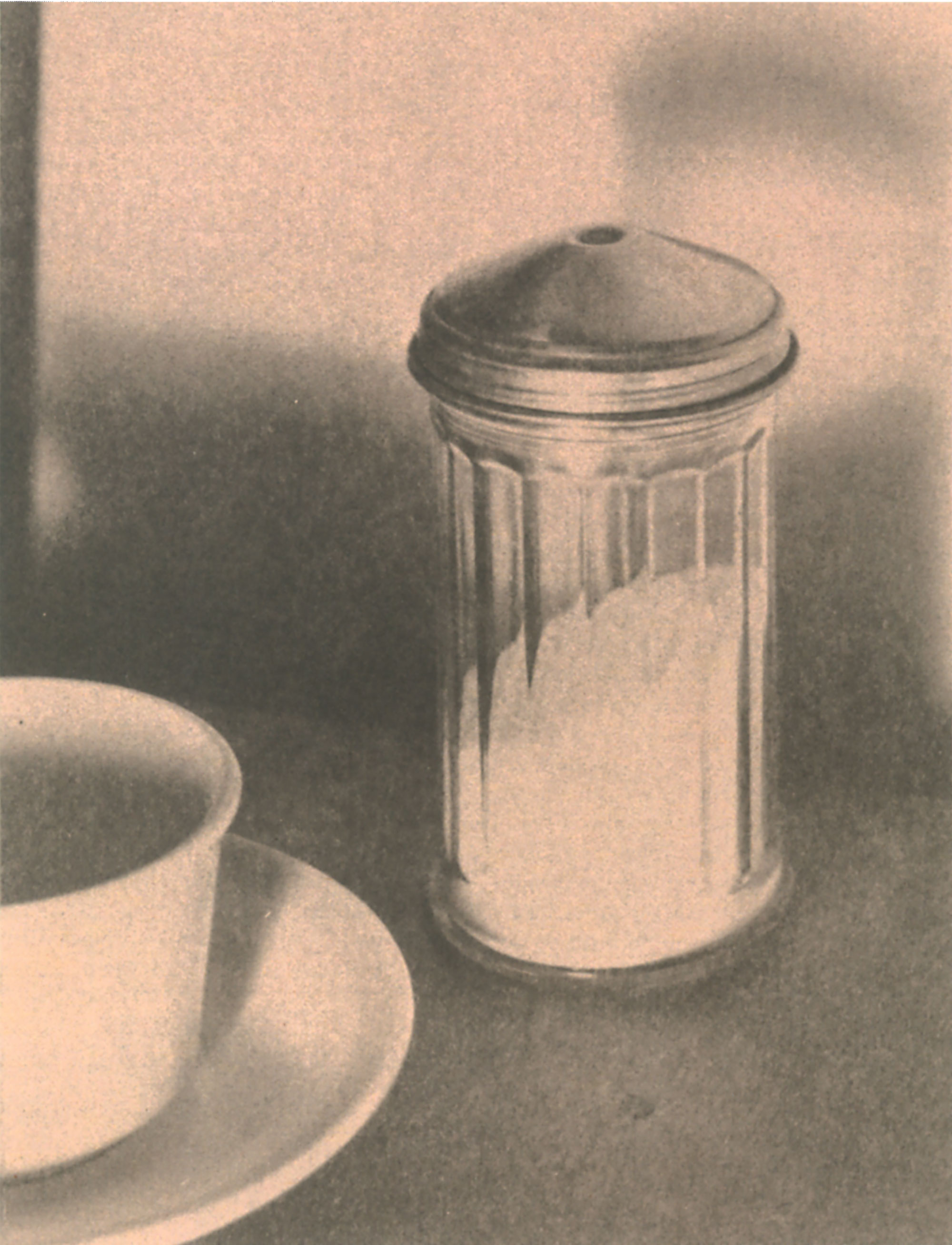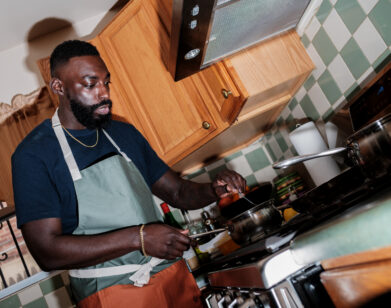How food critic Bryan Miller took his talents from kitchen to criticism

Bryan Miller has the perfect job. As the food and restaurant critic for The New York Times, he gets paid to do what most of us pay to do, dine out five or six times a week at Manhattan’s choicest food spots, all in the interest of protecting the public palate. A graduate of Colgate University and Columbia University’s Graduate School of Journalism in New York, 33-year-old Miller started out in “hard news,” working first as a general assignment reporter for various newspapers, the AP newswire and then freelance, until he decided that all these thoughts of food were, indeed, food for thought. Miller enrolled in several cooking classes and even worked as a chef at the Restaurant du Village in Chester, Connecticut, before joining The New York Times in 1983. Starting at the Living Section, Bryan joined the ranks of such culinary quotesmen as Pierre Franey, Mimi Sheraton, and Gael Greene in striking fear, and a dash of loathing, into the hearts of New York City’s restaurateurs. Declining to be photographed, Miller was nonetheless quite forthcoming, over our several lunches, about his taste for the good life.
RUTH LESERMAN: What made you want to go into the food aspect of journalism?
BRYAN MILLER: I started out working after school for small newspapers, then I worked for larger newspapers, the Associated Press, and magazines and freelance. I was a newsman and 95 percent was hard news, covering ax murders for A.P. in Oklahoma, politics in Boston, and so on. I came to a point in my career where I wanted to get out of the daily journalism, which to a large extent was really writing for the record what people already knew from radio and television. I wanted to do something where I was breaking my own ground, even if it was in the feature sense. So, I decided to specialize in food reporting. For the next few years, while I was still a news reporter, I took courses in cooking wherever I happened to be, and also wine. Eventually, I took off at a magazine called Connecticut Magazine. When I left there, I went to Europe. I went to school in Spain for half a year, and was exposed to a lot of good food in France, where I met my wife, who is French. I was exposed to different foods while traveling around Europe. On my way back, I decided to get really serious and got a job in the kitchen of a French restaurant. I took a year off and worked in the kitchen, starting out cleaning the beards off mussels, and then working around the various positions in the kitchen, until, at the end of the year, I was working on the stove with the chef. Once I had invested that time and started writing full time about food, I was on my way, and that’s how I got my start.
RL: Was there any person whom you respected very much in the food business, who helped you along the way?
BM: Just the people I worked with. Classes are one thing, and I had classes with some good people, but I think there is nothing like working in the kitchen under pressure to get a worm’s eye view of the apple. You really have to work in the kitchen. I think any restaurant reviewer, or anyone who writes about food, should have that as part of his basic training. Seeing a restaurant under the incredible pressure of a Saturday night at nine o’clock, when you’re trying to juggle 25 things at once—that’s cooking.
RL: And do you think that now, when you make a judgement about whether or not a dish is prepared well, that your restaurant background has given you a greater authority?
BM: Well, you learn the tricks, so when you’re on the other side of the table in the dining room, trying to evaluate it, you can spot things. You’ll know, say, that the vegetables had to be prepared in advance, that they popped and resteamed them before serving because they were behind on orders. Mostly, it’s things done in advance that shows, and the little shortcuts that are taken in sauce making. When you’re really behind, you don’t let it reduce enough, you don’t put all the proper ingredients in. I’ve worked in a kitchen on a busy night when the reviewer for the local paper came in, and I think I’m a better reviewer for that.
RL: You can make an assessment as to how creative the chef was in rectifying those mistakes?
BM: Yes. The hallmark of a good chef is consistency under fire. There are many, many people who are excellent home cooks, which has nothing to do with cooking in a restaurant.
RL: I’ve been told that one of the most important aspects of being a chef is knowing how to rectify the seasonings before you send them out.
BM: Rectifying the seasoning is important, but I think the most important thing in restaurant chefing is tasting the food before you send it out. I’m convinced that the chefs don’t taste the food before it goes out in over half the restaurants I go to. I work with Pierre Franey a lot at the Times. He was the chef at Le Pavillon for 30-some years, and even now, when he’s cooking for the newspaper, he’s always tasting, tasting, tasting everything. I’m convinced that some of the bland or grossly over-seasoned foods I’ve had are the results of chefs not tasting; they just make it and send it out. You can’t do that. It seems so elementary, but I don’t think many people do it.
RL: Is there any particular genre of food that especially interests you right now?
BM: I have pretty Catholic tastes about food. I think some of the blending of cuisines right now is interesting. In California, the Japanese/French mélange for example—it’s being done very little here in New York. But, I think what’s going on out there will be coming here. When an intelligent chef is eclectic about his food, he can bring together influences from all different cuisines. That’s one great blessing of the so-called New American cooking, and the vestiges of the Nouvelle Cuisine. We’re not so dogmatic anymore, and a good chef can bring many different elements to a dish. If it’s well thought out, it can be marvelous; that’s what really can expand the body of cooking today.
RL: There seems to be a new interest in all kinds of herbs and spices right now. First they were in the restaurants, now you can find them in the markets.
BM: The demand definitely comes from the restaurants. The restaurants would go to the Hunts Point Market and start asking for white eggplant. Suddenly, white eggplant starts showing up on several restaurant menus. People become fascinated by it, and they want to cook it at home. The next thing you know, Balducci’s has white eggplant. Then, The New York Times will run a little story on it, and voilà, everybody is eating white eggplant. It can be good, or it can be just a silly trend that lasts a short time. Or you can overdo it, as in the case of kiwi. But it’s fun. That’s what cooking is all about—if it’s fun and it doesn’t hurt anyone, I think it’s a good influence.
RL: Could you tell us something about your “Diner’s Journal”?
BM: The “Diner’s Journal” began when Mimi Sheraton left the paper and Marian Burros took over as restaurant critic. Rather than do two full-blown reviews a week, as Mimi often did, Marian was asked to do one review a week, and I was expected to come up with something to supplement that. I thought it would be nice to have a column that was less formal, addressed to a different age group and different social stratum. So we came up with this idea where I would look around for offbeat places, good small restaurants, places that normally wouldn’t merit a full review in the Times, but which have something to offer, whether it’s excellent french fries, roast goat, or whatever. I would spend every night running around, asking around, and “Diner’s Journal” became a breezy, informal column in which I would basically recount my experiences during the week. I’d go anywhere from a reconverted police bar on the Lower East Side that serves excellent pasta for six dollars, to a Haitian woman up on the East Side who serves dinner in her front parlor to people when she feels like it. The column became this grab bag of some of the exotic and crazy dining experiences that New York is filled with for those who find them. Places you could have some unusual food, and meet people you wouldn’t meet at La Cote Basque. When Marian left, I took over the main restaurant column and because I felt that “Diner’s Journal” was really striking such a chord, I asked, probably at peril to my emotional health, to keep both of them. I’ve been doing both columns since October, which makes for a lot of fourteen-hour days, but I think it’s important that we reach out to readers of all ages and economic groups.
RL: Is there any specific thing you look for when you first go to a restaurant?
BM: Well, when I walk into a restaurant, my antennae are up for everything, but my first impression is cleanliness. I’m a real stickler for that. People often ask me if I got into the kitchen. I say no, I’m not a health inspector and I can’t go into the kitchen very easily without blowing my cover. But I can look at the dining room, the silverware, the rugs, and you can look around and see if they take pride in the place. Chances are if the front of the house is clean, the back of the house is moderately clean. I also look for the way you are greeted. A real pet peeve of mine is going into a restaurant and standing, just loitering with no one coming over to greet me. I think every restaurant should have someone to greet you and say welcome just as soon as you come in the door. I don’t care how busy they are or what’s going on. You should not have to stand around, looking at the ceiling and feeling awkward. So those are the two immediate impressions.
RL: How important are decor and ambiance?
BM: It’s hard to judge. One person’s elegant dining room is another person’s kitchen. I try to describe the way I see the room without being terribly judgemental. Certain ethnic groups have certain tastes that I don’t share, but that won’t affect the rating terribly. What does affect it is table spacing, comfort of chairs, noise level, smoke level. Do they put smokers in other areas? Those are the things that really count, not what’s on the walls.
RL: If you give a restaurant four stars, how soon after that do you feel you should cover it again to make sure they are living up to that standard?
BM: A restaurant with four stars should be visited several times a year, just to make sure that they are maintaining their quality, and not trying to cut corners because they’re so popular. Conversely, a restaurant that loses stars deserves a chance within three to six months to be revisited, and, if the overall quality is significantly improved, they should be re-reviewed and upgraded as soon as possible. I don’t think it’s fair to let a demotion like that hang out here for years, because the restaurant could have improved dramatically.
RL: Have you gotten any feedback from restaurants as to the increased volume when you’ve given them a very good review, or vice-versa?
BM: I know from experience that even the smallest mention from “Diner’s Journal” will overwhelm most restaurants. I’ve seen it time and time again. Restaurateurs will call me, after a mention, and tell me the phone started ringing the night before—when the paper hits the street about 10:30, reservations start coming in. And some places have been deluged to the point that they have had to take the phone off the hook, or just close the door. I’ve been getting mail on many places I’ve written about that went from being relaxing restaurants with very good food to three-ring circuses. The management doesn’t know how to control the crowds, they let in too many people and, in some cases, they get greedy. Some people even add tables to make it more crowded. When I hear this, I make an effort to confirm it. If it’s true, I mention in the column that the restaurant I wrote about a few weeks ago has become very crowded and you may want to think twice before you go there right now. If I don’t, I’ll hear about it from readers. They are not timid when it comes to giving me hell.
RL: Unfortunately, we find food fads are in and out so rapidly. What would you say is the current food fad? Is there any type of ethnic that is terribly in now?
BM: We had Mexican and Cajun, which were going neck and neck for about the last year. They’ve both crested and probably are on the way down. Of course, the California style of cooking is being interpreted by the Italians, French, and Americans—that’s what we’re seeing now. Lots of grilling, fresh vegetables, sauces doused with chili powders, some Oriental influences. Basically, what’s going on is what was going on in California five years ago.
RL: The mélange…
BM: The young New York chefs, as well as some of the more established ones, are looking west for inspiration for the first time, and not to Europe. The first wave of these restaurants are opening up right now at the rate of one a month. They’re little caricatures of what’s going on in California. That’s the way New Yorkers are sometimes. They’ll take something, leap on it voraciously and then blow it all out of proportion. The places we’re seeing now are these cavernous, highly designed, two-story restaurants. I think it’s going to calm down eventually, when New Yorkers get tired of all the histrionics and just want good food. The places that are opening now are just sideshows.
RL: Californians say that for the last five years, “theater” in the restaurant has been a requirement.
BM: In New York, unfortunately, it’s all theater and very little plot.






